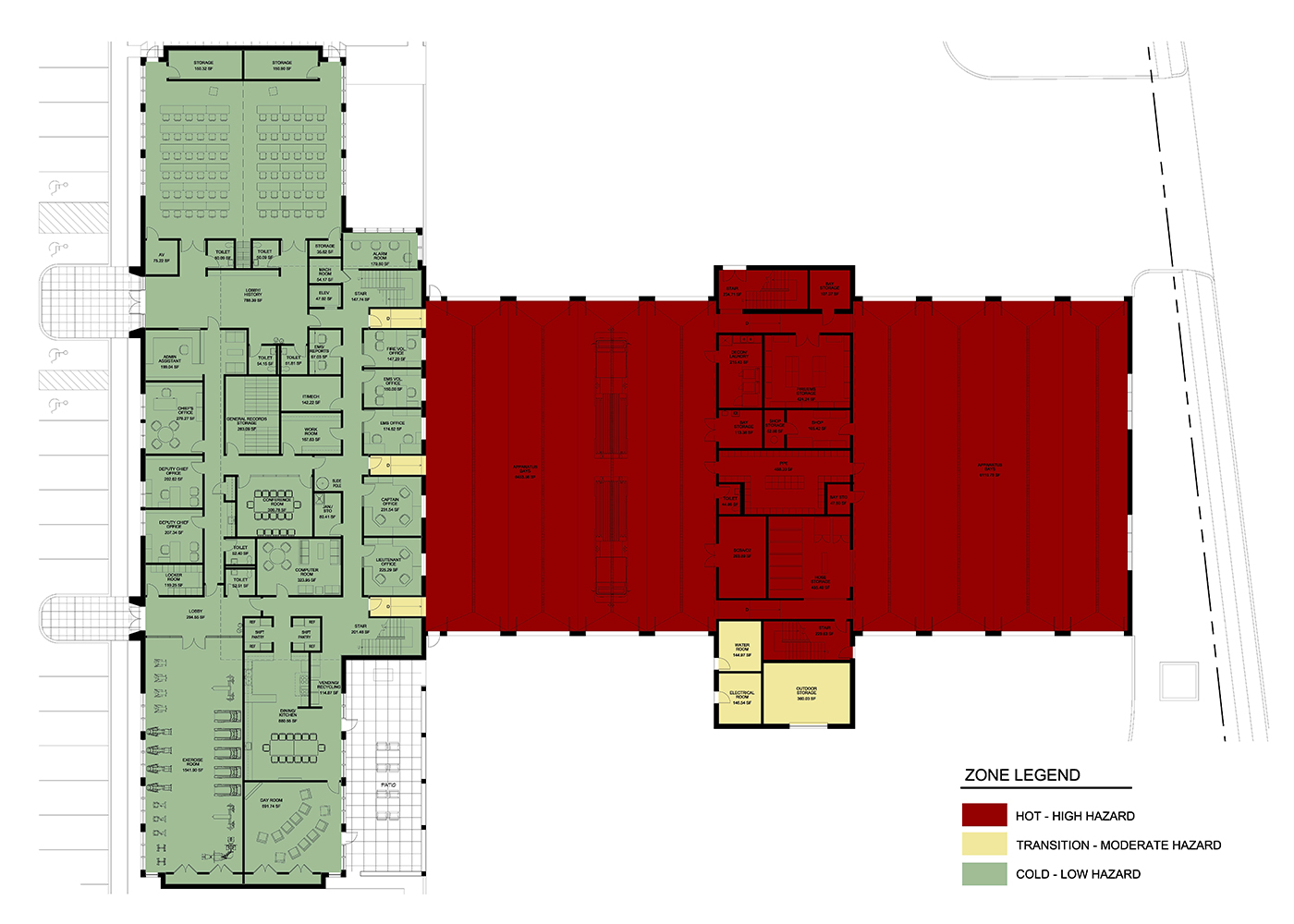
Everyday emergency service professionals put their lives on the line running into burning buildings, cleaning up hazardous waste spills and controlling chemical fires. In a time when our men and women are being exposed to some of the most toxic, cancer-causing carcinogens in firefighting history, the question arises; How do we keep our most precious assets safe?
As one of the featured speakers at the 2015 Firehouse Expo Station Design Conference and 2015 F.I.E.R.O. Fire Station Symposium Paul Erickson, Sr. Principal of LeMay Erickson Willcox Architects, presented:
HOT ZONE Design; Contain the Contaminants
Emergency service professionals are classified by the insurance industry as high hazard and demonstrate an alarmingly high incidence of heart attack, high blood pressure and cancer. When compared to the general population, firefighters demonstrate:
- 100% higher risk of developing testicular cancer
- 50% higher risk for multiple myeloma, an incurable bone cancer50% higher risk for non-Hodgkin’s lymphoma
- 28% higher risk of prostate cancer
- Increases in brain, colon and thyroid cancers and malignant melanoma
- Increases in breast cancer
Many factors contribute to these numbers and most are encountered in emergency response to incidents, particularly those involving smoke. Regardless of the type of fire (structural, nonstructural, electrical or training), if smoke is involved, carcinogens are present. Anything brought into physical contact with the smoke, or surfaces that have been exposed to the smoke, become transporters of those carcinogens. That means that all gear, all tools and equipment, all apparatus and all vehicles exposed to smoke collect and transport carcinogens from each incident back to the station.
Taking these and other factors into consideration, Hot Zone Design revolutionizes the way we think in terms of fire station design. This strategy focuses on controlling the entry and handling of carcinogen-contaminated personnel and equipment in the building, employing the idea of creating and then managing three levels of exposure to contaminants: HOT Zone (red) for high hazard, TRANSITION Zone (yellow) for moderate hazard and COLD Zone (green) for low hazard.
Implementing this design thinking addresses the arrival of carcinogens in the building, and prevents the inadvertent migration of contaminated materials within the structure however, design thinking and departmental protocols must work together. Strategies include the following:
- Contain the contaminants
- Separate occupants from contaminants
- Focus on the highest hazards
While scientific studies have yet to be conducted to quantify results, the common-sense approaches of HOT Zone Design offer the possibility to dramatically reduce the incidence of cancer within the firefighting community for generations to come. Is there a goal more worthy?
For additional information on this topic or to learn how to incoprorate HOT Zone thinking into the design of your station, please contact Paul Erickson at 703-956-5600 or perickson@lewarchitects.com.
